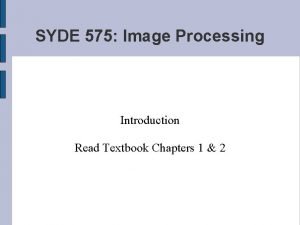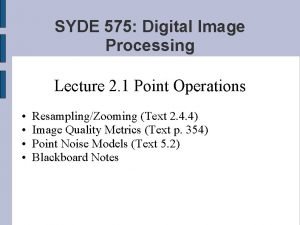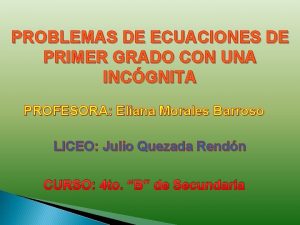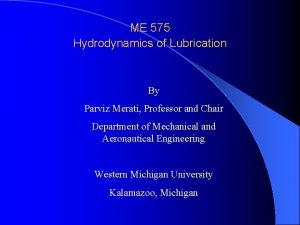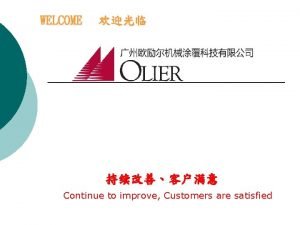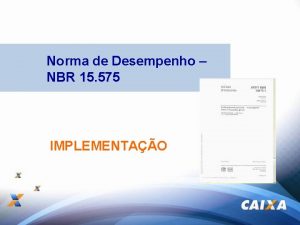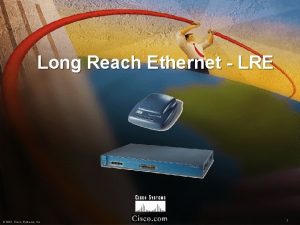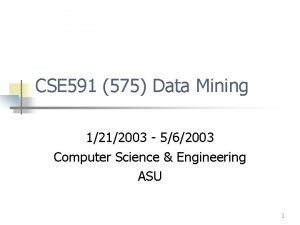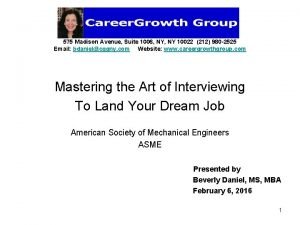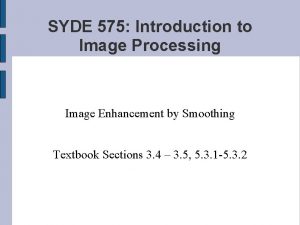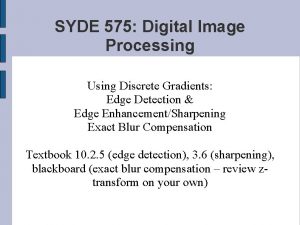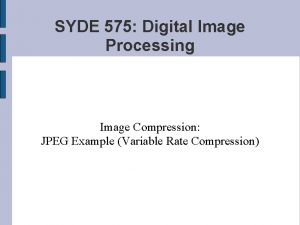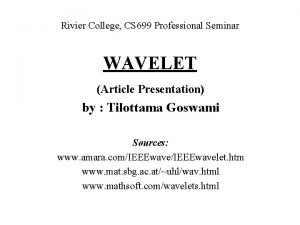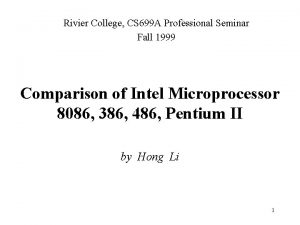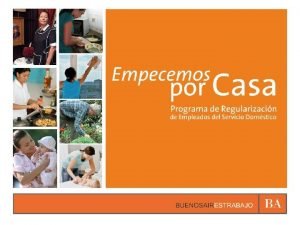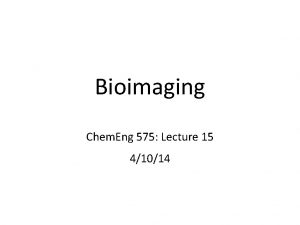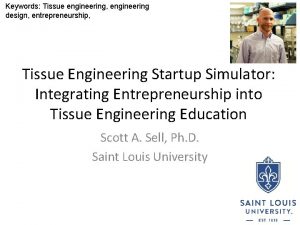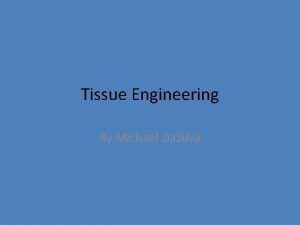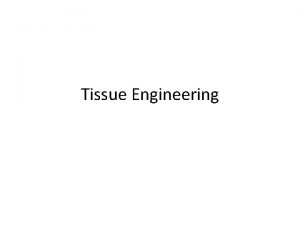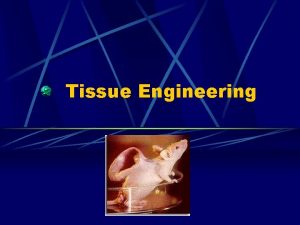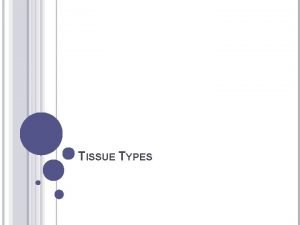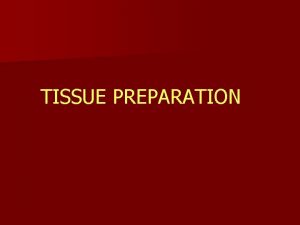Introduction to Tissue Engineering Chem Eng 575 Tissue


















- Slides: 18

Introduction to Tissue Engineering Chem. Eng 575: Tissue Engineering Lecture 1 January 24 th, 2017

What is Tissue Engineering?

Tissue Engineering Seeks to Provide Replacement Tissues • Current lack of organ donors to meet rising demand of transplants • Each year, 40 to 90 million hospital days are attributed to the treatment of tissue and organ failure in the United States. • $400 billion per year is estimated as the total national health care cost for the 8 million or so procedures performed on patients suffering end-stage organ failure or tissue loss within the US. • Critical problems for tissue engineering 1. Vascularization 2. Cell Delivery 3. Mechanical mismatch

Tissue Engineering Strategy

Tissue Engineered Solutions Historically: Bio-inert materials to replace structural units of body Resorbable sutures, 600 BC Dental implants Huebsch and Mooney, Nature, 2009 Later Reading during Biomaterials Lecture

Machines to replace biological tissue function Abio. Core artificial heart Ex vivo dialysis “beatless” artificial heart Texas Heart Institute

Engineered Biological Tissue Trachea, Fauza, Children’s Hospital Boston Nanofiber Solutions Skin grafts Engineered bladder, Tony Atala

SYLLABUS OVERVIEW INSTRUCTOR Professor Shelly Peyton Chemical Engineering Department speyton@ecs. umass. edu LSL N 531 Telephone: 545 -1133 Office hours: by appointment COURSE LOGISTICS Lectures are scheduled on Tuesdays and Thursdays, 10 -11: 15 a, Hasbrouck 230 TEXTBOOKS AND OTHER MATERIALS There are no required textbooks for this class Textbooks that might be helpful as references (and are available at the Library) are: Tissue Engineering: by Saltzman, Oxford University Press (2004) Molecular Biology of the Cell, by Alberts et al. Biology for Engineers, by Johnson Molecular Cell Biology by Lodish et al. Principles of Polymer Chemistry by Flory COURSE WEBSITE http: //openwetware. org/wiki/Chem. Eng_575

SYLLABUS, CONT. ASSIGNMENTS Readings: It is critical that you keep up with the reading assignments, as class lectures will give overviews of the reading with an additional focus on recent advances in the field of bioengineering. Readings come from current literature (research papers) and the online textbook. In-Class Literature Review: During some classes, we will be reviewing journal articles as a group. Grading will be based on pre-class preparation, ability to lead discussion of the article, and participation. Wiki Pages: Each class member will research one topical area of tissue engineering, create a wiki page on that topic for the student-created textbook, and do a short research presentation in class. http: //openwetware. org/wiki/575_Wikis. Research Project: There will be a group research project consisting of writing an NIH-style grant, and a research presentation. Problem Sets: There will be various problem sets that can be done individually, or in teams, that will be assigned and graded in class. GRADING This course will NOT BE CURVED. Numerical grades will be assigned for each homework assignment, examination, and project. Your final grade will be computed based on your performance in all aspects of the course with weights as follows : Research Project Wiki Page & Presentation Literature Review Problem Sets 50% 20% 10% ACADEMIC HONESTY Each student is responsible for all individual assignments. The University policy on academic honesty will be strictly enforced. The details of this policy as well as examples of violations are outlined in the “Undergraduate Rights and Responsibilities” document. Further information can be found at http: //www. umass. edu/dean_students/codeofconduct/acadhonesty/

Overall Structure of Class Lectures from Prof. Peyton and two guests Paper review Wiki presentations (student lectures) Group research presentations Small in-class problem sets No homeworks No exams This isn’t a typical engineering lecture-based class where I will tell you how the world works. You will take ownership over what you get out of this class.

I am flexible, meet me halfway 1. Raise your hand if you plan to graduate this spring. 2. Raise your hand if you are applying to jobs and/or grad school. • I understand that you will have conflicts with class due to travel for #2. – I don’t take attendance. – But, email me that you are missing. – If you were signed up to give a wiki, we will reschedule, email me to facilitate that. – If you were signed up to present a figure of a paper, YOU ARE RESPONSIBLE FOR FINDING A REPLACEMENT. • Find a classmate, switch with her/him, and email me the info.

Pick groups • Take the next 5 minutes to self-organize into 6 groups of 4 -6. • You have 15 min to establish the critical design criteria for an engineered tissue. – What does this tissue/organ do? – What are the *minimum requirements* for someone to live/function w/ a replacement? – What would an ideal replacement contain? – Use anything you can as a resource to help you.

Pick a paper • With your group, come to the front and decide which paper your team will review. • Note the # on the front page, and you can see what date you will be presenting the paper. • This paper will set the basis for your final project.

Preparing for Journal Review 1. Read the paper! (Everyone) 2. Come to class with questions! (Everyone) 3. Your team should bring a laptop, with the appropriate hook up. 4. If you are presenting a figure, know the figure inside and out! (Be prepared for questions) 5. Walk the class through the figure and explain it thoroughly. 6. Do your best to relate the figure to previous figures, if that’s what the authors intended.

Journal Review, Continued • The journal paper presentation is worth 20% of your final grade, and I grade your individual contribution (not as a team). • There is a grading rubric on the website to help you prepare. • 10% of the review grade is from in-class (when your team presents). • 10% of your grade is from your participation and preparation during the days when you ARE NOT PRESENTING. • You will get a sheet on the class before the paper review days, which you will turn in at the start of class on the paper review day, that will ensure you prepare and read the paper on nonpresentation days.

Pick your wikis (individual, with group disc. ) • Come see the wiki signup sheet • Choose a topic you’re excited about, plus a date that works for you, and work with your team to choose wikis that you think best go with your group project. • The dates are fixed. (first is 1/31) • Email me at any time this semester if you want another wiki for extra credit (1/3 letter grade, page only, no presentation.

Wiki Pages • Create a Wiki page giving a thorough description, with references, of your tissue engineering device, company, or leader in the field. • Post at http: //openwetware. org/wiki/575_Wikis. – You will need to “sign up” at http: //openwetware. org/wiki/Open. Wet. Ware: How_to_join • There is a link to pages created in the previous years on the website as well, for inspiration. Yours will be better! • Some wiki pages that you can create are also on the current website. You need to create a new, improved wiki from this other page as starting material. Watch plagiarism!! There is a guideline online. • Wiki page + presentation = 20% of final grade (10% is the page, 10% is the presentation). Grading rubrics are also online.

Mini Research Presentation (from Wiki Pages Assignment) • Give a 10 min presentation on a tissue engineered device, with another 5 -10 min for questions. – Discuss the following items 1. 2. 3. 4. 5. 6. 7. • • The human health problem or need that initiated the design of the device. Potential market for the device (how many patients could it serve, what is the economic impact? ) The scientific literature leading up to the design (i. e. what role did initial scientists have in coming up with the idea. ) The partners involved (academic institution, VCs, industry) Evolution of the device and its implementation Role of animal studies and clinical trials Reasons for its success or failure (both successful and unsuccessful examples desirable!) Topics for presentation have already been assigned a date. You can sign up for any one you like, but the dates are fixed. Check your plagiarism beforehand with Turn. It. In: http: //www. library. umass. edu/services/plagiarism-prevention/


